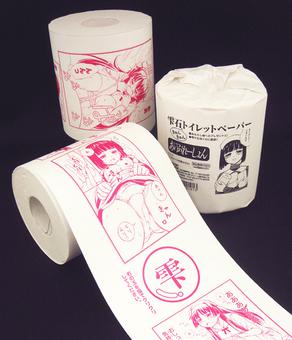Omorashi
Omorashi[edit | edit source]
Omorashi (____) is a Japanese term that refers to the act of urinary incontinence or the feeling of having a full bladder. It is often associated with a fetish for wetting oneself or witnessing others in such a situation. The term is derived from the Japanese words "omo" (to wet) and "rashi" (to leak).
Cultural Context[edit | edit source]
Omorashi is a niche interest within the broader spectrum of fetishism and is particularly noted in Japanese culture. It is often depicted in manga and anime, where characters may find themselves in situations where they are unable to reach a toilet in time. This can be portrayed in a humorous or embarrassing light, adding to the dramatic tension of the scene.
Psychological Aspects[edit | edit source]
The appeal of omorashi can be linked to various psychological factors, including the thrill of embarrassment, the relief of finally being able to urinate, and the taboo nature of the act. For some, it is the vulnerability and loss of control that is appealing, while for others, it is the act of caring for someone in distress.
Omorashi in Media[edit | edit source]
Omorashi has been featured in various forms of media, including video games, literature, and film. It is often used as a plot device to create tension or humor. In some cases, it is the central theme of a story, exploring the characters' experiences and emotions related to the act of wetting.
Related Concepts[edit | edit source]
Omorashi is related to other paraphilias involving bodily functions, such as urophilia and coprophilia. However, it is distinct in its focus on the act of desperation and the eventual release.
Related Pages[edit | edit source]
| Japanese culture | ||||||||
|---|---|---|---|---|---|---|---|---|
This Japanese culture related article is a stub.
|
Search WikiMD
Ad.Tired of being Overweight? Try W8MD's physician weight loss program.
Semaglutide (Ozempic / Wegovy and Tirzepatide (Mounjaro / Zepbound) available.
Advertise on WikiMD
|
WikiMD's Wellness Encyclopedia |
| Let Food Be Thy Medicine Medicine Thy Food - Hippocrates |
Translate this page: - East Asian
中文,
日本,
한국어,
South Asian
हिन्दी,
தமிழ்,
తెలుగు,
Urdu,
ಕನ್ನಡ,
Southeast Asian
Indonesian,
Vietnamese,
Thai,
မြန်မာဘာသာ,
বাংলা
European
español,
Deutsch,
français,
Greek,
português do Brasil,
polski,
română,
русский,
Nederlands,
norsk,
svenska,
suomi,
Italian
Middle Eastern & African
عربى,
Turkish,
Persian,
Hebrew,
Afrikaans,
isiZulu,
Kiswahili,
Other
Bulgarian,
Hungarian,
Czech,
Swedish,
മലയാളം,
मराठी,
ਪੰਜਾਬੀ,
ગુજરાતી,
Portuguese,
Ukrainian
Medical Disclaimer: WikiMD is not a substitute for professional medical advice. The information on WikiMD is provided as an information resource only, may be incorrect, outdated or misleading, and is not to be used or relied on for any diagnostic or treatment purposes. Please consult your health care provider before making any healthcare decisions or for guidance about a specific medical condition. WikiMD expressly disclaims responsibility, and shall have no liability, for any damages, loss, injury, or liability whatsoever suffered as a result of your reliance on the information contained in this site. By visiting this site you agree to the foregoing terms and conditions, which may from time to time be changed or supplemented by WikiMD. If you do not agree to the foregoing terms and conditions, you should not enter or use this site. See full disclaimer.
Credits:Most images are courtesy of Wikimedia commons, and templates, categories Wikipedia, licensed under CC BY SA or similar.
Contributors: Prab R. Tumpati, MD

